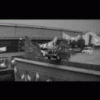
Fuel Gauge Not Working?
Started by
John Goodwill
, May 09 2008 10:23 AM
5 replies to this topic
#1

Posted 09 May 2008 - 10:23 AM
My daily drive is a 1963 Mk1 Cooper 'S' and I can't get the fuel guage working correctly. When I first turn the ignition on on the guage registers then after a few seconds 1 it goes back down to zero. I have checked all the wires on the rear of the gauges etc.. but just wonder if they are connected to the correct places, ie voltage stabiliser temp gauge and fuel gauge, has anybody any ideas or a wiring diagram showing which coloured wires go where?
#2

Posted 09 May 2008 - 11:05 AM
I recently experienced a similar problem, have you tried putting a multimeter across the voltage stabilizer output and checking tha you have 9v? In my case it was simply a case of swapping this component and the fuel gauge came to life again. I have a wiring diagram form the original BMC Workshop Manual that covers your car, but probably should not post it here (copyright). PM me if you need help with a copy of the diagram.
#3

Posted 09 May 2008 - 11:45 AM
If it does turn out to be a faulty stabiliser (don't forget to make sure it is earthing correctly) then I have some replacements made up using electronic components... 
#4

Posted 09 May 2008 - 12:38 PM
It will NOT be the stabilizer... because your '63 doesn't have one.
Prior to September 1964 the cars did not use the voltage stabilizer. However, over the years various bits are often cobbled together to keep our cars on the road. As built your 1963 should have the fast acting fuel gauge that JUMPS off of empty when you switch on the ignition (as opposed to the later bimetallic gauges that CREEP slowly off of empty). The sending unit will bolt onto the tank with six screws instead of the later bayonet ring. If either of these are not true, you have a mixed system and have other problems to sort out.
The early fuel gauge MUST have a good earth connection. If you are at all in doubt, access the back of the fuel gauge and remove one of the two gauge mounting screws. Sand the area around the hole for the screw and make an earthing wire that you secure under the head of the screw when you re-install it. The sending unit also has an earth wire. That must also have an excellent connection. Based on the symptoms you're describing, I'm thinking you have a gauge earth problem.
A few years ago I wrote something about the early gauge system. It may shed some light on your problem. See:
http://home.mindspri...ldFuelGauge.pdf
Prior to September 1964 the cars did not use the voltage stabilizer. However, over the years various bits are often cobbled together to keep our cars on the road. As built your 1963 should have the fast acting fuel gauge that JUMPS off of empty when you switch on the ignition (as opposed to the later bimetallic gauges that CREEP slowly off of empty). The sending unit will bolt onto the tank with six screws instead of the later bayonet ring. If either of these are not true, you have a mixed system and have other problems to sort out.
The early fuel gauge MUST have a good earth connection. If you are at all in doubt, access the back of the fuel gauge and remove one of the two gauge mounting screws. Sand the area around the hole for the screw and make an earthing wire that you secure under the head of the screw when you re-install it. The sending unit also has an earth wire. That must also have an excellent connection. Based on the symptoms you're describing, I'm thinking you have a gauge earth problem.
A few years ago I wrote something about the early gauge system. It may shed some light on your problem. See:
http://home.mindspri...ldFuelGauge.pdf
#5

Posted 09 May 2008 - 09:21 PM
A good way to check is to earth the positive connector on the tank sender to earth while the ignition is on. If the gauge jumps straight up to the full position then you know the gauge is ok and the problem is most likely the tank sender unit inside the tank which senses the level of fuel in the tank.
Hope this is of some use.
Hope this is of some use.
#6

Posted 09 May 2008 - 11:29 PM
A good way to check is to earth the positive connector on the tank sender to earth while the ignition is on. If the gauge jumps straight up to the full position then you know the gauge is ok and the problem is most likely the tank sender unit inside the tank which senses the level of fuel in the tank.
Sorry... that's not correct in this instance.
This is a 1963 which (if original) will NOT have the stabilizer. On the cars without the stabilizer the sending unit works from 0-90 Ohms (empty to full) while the LATER and more common senders you're familiar with operate between 240-30 Ohms (empty to full).
On the early sending unit if you pull the wire off the sender and earth it, the gauge will go to EMPTY, not full. If you pull the wire off and leave it disconnected the early gauge will got to FULL.
1 user(s) are reading this topic
0 members, 1 guests, 0 anonymous users















